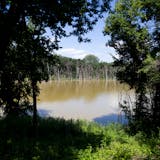It is possible right now, over a couple of steamy weeks in Sri Lanka, to briefly knock around the seaside capital of Colombo, with its sidewalk snake charmers wrangling cobras and pythons beneath sleek, high-rise office buildings; then hop a colonial-era train for an all-day run up into the tea plantations of the central highlands, and then wander down through teeming national game parks to the turquoise waters of funky beach towns — and find little evidence of the bloody, tragic recent history of this beautiful, benighted island that sits like a fallen tear off the Indian subcontinent.
This was a bit of a surprise.
It was just in 2009 that the world watched as Sri Lanka's Sinhalese government and Tamil Tiger rebels exchanged horrific volleys of war crimes that ended a 25-year civil war. In the final months, at least 40,000 Sri Lankans died in the island's northern provinces, most of them Tamils. You can read all about it in appalling reports from the United Nations and Human Rights Watch, among others.
This, one of the century's ugliest sanctioned massacres, outwardly quieted a place that had become one of the world's least-visited physically beautiful places. This, too, was just five years after the 2004 tsunami, a biblical 90-foot wave that crashed ashore without warning on the island's south and east coasts. They're guessing — guessing — that maybe 30,000 more Sri Lankans died that one day in December; more than a million were driven from their homes. All this grotesque trauma in a country of 20 million people on an island the size of Ireland.
Sri Lanka had become, as author John Gimlette writes, "paradise damaged."
But these days, you might only glimpse Sri Lankans planting shrubs around new, marble war memorials, or maybe spot the rubble of the tsunami's wreckage through the overgrowth on a vacant seaside lot.
You definitely see, very quickly, that the world is streaming back. Travel to Sri Lanka bottomed out in 2009 in the war's final days, but visas have tripled since then. It is mostly Europeans, Indians and Chinese (less than 3 percent of arrivals are from the U.S.). They are all eager to return to the island's tropical beauty and its relaxed, welcoming, prosperous post-colonial culture. Sri Lanka is a country with as many people as Florida, twice the per capita GDP of India, but a tourism economy the size of Azerbaijan.
That intimate scale and the fresh energy of recovery are part of Sri Lanka's emerging allure.



